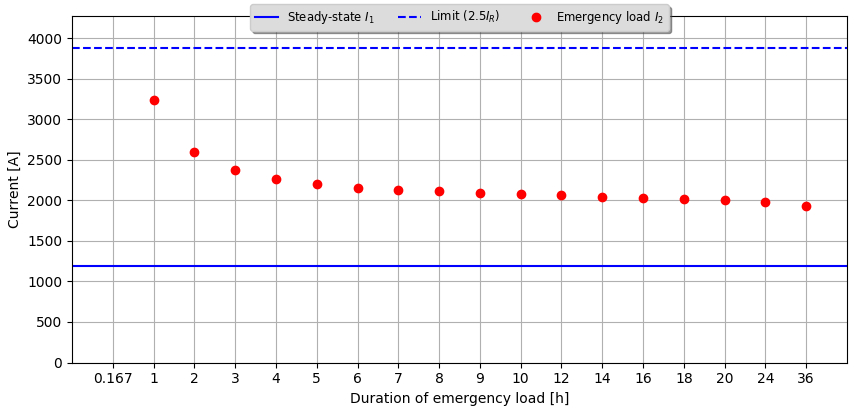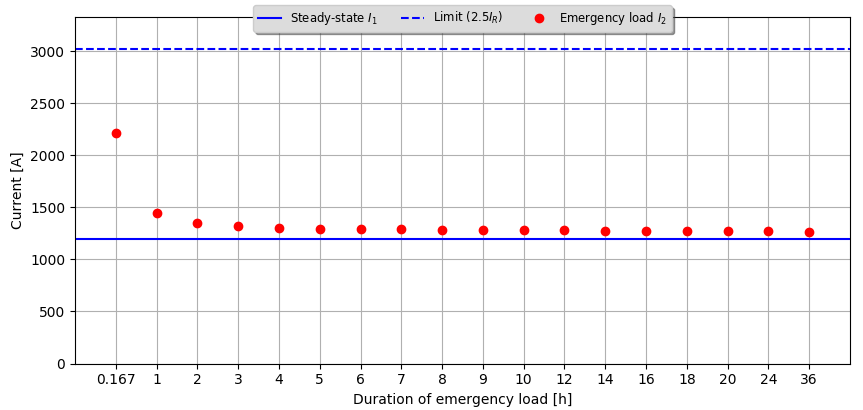The emergency rating calculations have now been updated and validated according to IEC standard 60853-2.
Posted 2019-10-01
Categories: Theory, Validation
Transient emergency rating calculations are coverer in section four (chapter 8) of the IEC standard 60853-2. The method for calculating the emergency ratings applies to cables buried in the ground, either directly or in ducts, and to cables in air. The method is intended for emergency loads not greater than 2.5 times their rated full load current $I_R$ (100% load factor).
The procedure for calculating the short time emergency rating is based on the knowledge of the conductor temperature transient of a cable circuit carrying a constant current $I_1$ (applied for a sufficiently long time for steady-state conditions to be reached) being subjected to an emergency load current $I_2$ (greater than $I_1$). If $I_2$ is applied for a certain duration, the question is how large may $I_2$ be so that conductor temperature does not exceed a specified maximum permissible temperature $θ_{max}$, taking into account the variation of the electrical resistivity of the conductor with temperature.
$$I_2 = I_R \sqrt{ \frac{(R_R/R_{max})(r-h_1^2[R_1/R_R])}{θ_R(t)/θ_R(∞)} + \frac{h_1^2R_1}{R_{max}} }$$The above equation (8-1) for the calculation of the emergency current $I_2$ from the IEC standard 60853-2 has been interpreted and clarified in Cableizer as follows:
The following results show a good agreement between Cableizer and example F6 from the IEC standard 60853-2:
| Cableizer | IEC 60853-2 | |
|---|---|---|
| Steady-state current before emergency transient $I_1$ | 1195 A | 1195 A |
| Transient conductor current $I_R$ | 1555.4 A | 1550 A |
| 6 hours emergency load current $I_2$ | 2083.4 A | 2131 A |
The following two figures show the permissible emergency load currents for different emergency durations in the range from 10 minutes up to 36 hours.
| $θ_{max}$ = 85 °C | $θ_{max}$ = 62 °C |
|---|---|
 |
 |
In Cableizer, the emergency rating can only be calculated for a single cable system at a time. The thermal effect of the emergency loading on nearby cable systems is not considered either. In case nearby cable systems are already operated at or close to their thermal limit, the emergency load current calculated in Cableizer might be too large and could harm nearby cable systems.